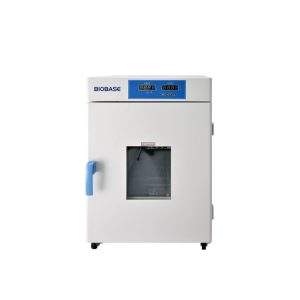$12,600.00 – $17,100.00Price range: $12,600.00 through $17,100.00
Our AccuSection Rotary microtome is an automatic, semi-automatic, and manual Microtome that meets the different needs of microtomists that cuts the sections of biological specimens into thin slices for use in microscopy. It is used to prepare thin layers of bone, minerals, teeth, and hair with section thicknesses ranging from 1 micron to 60 microns. Hard materials that use synthetic resins, they can slice up to 0.5 microns.

RWD is a global leader in the design and manufacturing of advanced research and laboratory equipment. Specializing in high-precision instruments for neuroscience, behavioral science, and pharmacology.



| S700 Semi-Auto microtome | S700A Fully-auto microtome |
|---|---|---|
Section thickness range: 0.5 - 100 μm | √ | √ |
Trimming section thickness range: 1 - 800 μm | √ | √ |
Electric coarse feed: 0 - 1800μm/s adjustable | √ | √ |
Specimen retraction: 0 - 250μm adjustable | √ | √ |
Horizontal feed: 28mm | √ | √ |
Vertical stroke: 70mm | √ | √ |
Specimen orientation: X/Y axis 8° | √ | √ |
Maximum specimen size: 60*50*40mm | √ | √ |
W x Dx H: 470*553*305mm | √ | √ |
Machine Weight | 28 KG | 36.4 KG |
Rock mode | √ | √ |
Position memory function | √ | √ |
Fully auto and manual section mode switch | √ | |
Emergency stop button | √ | |
Cut window | √ | |
Auto section speed adjustable | √ | |
4 auto section modes: Cont., Int., Single, Multi. | √ | |
Pedals (optional ) | √ |
S700 Semi-Auto Microtome | S700A Fully-Auto Microtome | |
|---|---|---|
Host of Microtome | √ | √ |
Blade holder assembly | √ | √ |
Universal clamp | √ | √ |
Tool set | √ | √ |
Easy of cleaning section waste tray (Large) | √ | √ |
User manual | √ | √ |
Power cable | √ | √ |
Dust cover | √ | √ |
Dummy plug | √ |

A Rotary microtome cuts the sections of biological specimens into thin slices for use in microscopy. It gets its name because of the rotary action of the handwheel used for slicing samples. It is used to prepare thin layers of bone, mineral, teeth, and hair with section thicknesses ranging from 1-micron to 60 microns. For hard materials that use synthetic resins, they can slice up to 0.5 microns.
The knife holder base holds the holder in place on the microtome stage. It can be moved to or away from the block, but it must remain fixed and secured during microtomy.
The knife holder comprises various parts, including the blade clamp, which holds the blade, the knife tilt, which adjusts the knife angle, and the faceplate, which directs the ribbons away from the blade and toward the operator.
The microtome body is a platform with rails that keeps the knife holder base in place.
The block holder or cassette clamp holds the paraffin block in place. The block usually slides up and down with each revolution while the blade remains stationary. The block holder may be equipped with knobs that enable the operator to move the block face in different directions to line the tissue with the blade.
The advancement handwheel rotates in one direction, moving the block closer to the knife at the preset microns.
The coarse handwheel moves the block closer or away from the knife.
Micron adjustment is used to adjust settings for slice thickness that vary from 1 to 60 microns.
The handwheel includes a safety lock that prevents the wheel from loosening and the block holder from falling towards the blade when inserting or removing a block.
The Rotary microtome uses a staged rotary action where the specimen is cut with the circular motion of the handwheel. The cutting procedure is done with a knife or disposable blade placed within the instrument.
The rotary microtome is used in various microbiological labs, including histopathology/anatomical pathology labs.
It can be used for histological examination of various organs. Frimiano et al. (2022) used a rotary microtome to cut 5mm sections of the liver of the collared lizard Tropidurus torquatus to conduct a histological examination. Another study conducted by Muhd-Farouk, Amin-Safwan, Mahsol, and Ikhwanuddin (2017) used a rotary microtome to investigate the histological characteristics and sexual maturity sizes of the testes of mud spiny lobsters. The testes were dissected and fixed in a 10% buffered formalin solution for 11 hours, then dehydrated in 70% alcohol before being processed in a tissue processor for 18±1 hours at 60°C. On a rotary microtome, the tissues blocks were sliced at a thickness of 4 microns.
A study conducted by Tosney and Landmesser (1986) used the rotary microtome to easily visualize individual growth cones of axonal guidance in developing vertebrates. They used the rotary microtome to cut neuron slices quickly and as small as 25 microns to be visualized in an electron microscope, without laborious reconstruction. This was impossible before and hindered research in this area for a long time.
The rotatory microtome is also used in biobanking. In biobanking, formalin-fixed, paraffin-embedded tissue (FFPE) is essential. It is relatively easy to acquire and store compared to fresh frozen tissue. While preparing formalin-fixed, paraffin-embedded tissue for biobanking, the correct microtomy technique is critical to get accurate results and conduct the correct microtomy. Sy and Ang (2018) used the rotary microtome to cut the formalin-fixed, paraffin-embedded sections.
The Rotary microtome is used to cut biological specimens according to the desired thickness ranging from 1 to 60 microns. It may be adapted to various types of tissue sectioning (hard, brittle, or fatty). However, it is not suitable for large tissue sectioning. Technological advancements in the rotary microtome have enhanced section quality, boosted production, and improved the technologist’s occupational safety.
The incidence of repetitive motion disorders, a frequent occupational health concern in the histology laboratory, may be reduced by eliminating the manual hand-wheel operation of the microtome. Disposable blades are used, eliminating the need for sharpening and increasing sample size accuracy. Additionally, knives can be used in place of blades; they are thick and large and produce fewer vibrations during microtomy. A high-resolution motor makes a stable and smooth automatic slicing system. Its heavier size makes it stable, and it is crucial to avoid undulations in the paraffin sections. A double locking system makes it secure and prevents injuries during block handling. An emergency button is used to stop the operation in danger. It is anti-static, non-waxing, and is very easy to clean. It has four different automatic slicing modes that cover a lot of sampling situations. Daily cleaning from paraffin residue maintains a microtome cutting ideally for many years.
The heavy size of the rotary microtome makes it less portable. The disposable blades are expensive and need to be handled with care to avoid accidents. Moreover, the knives get dull if they aren’t used on decalcified tissue that hasn’t been cleaned.
| Weight | 123.46 lbs |
|---|---|
| Dimensions | 62 × 57 × 79 cm |
| Device Type | Fully-motorized Microtomes, Semi-motorized Microtome |
You must be logged in to post a review.
There are no questions yet. Be the first to ask a question about this product.
Reviews
There are no reviews yet.